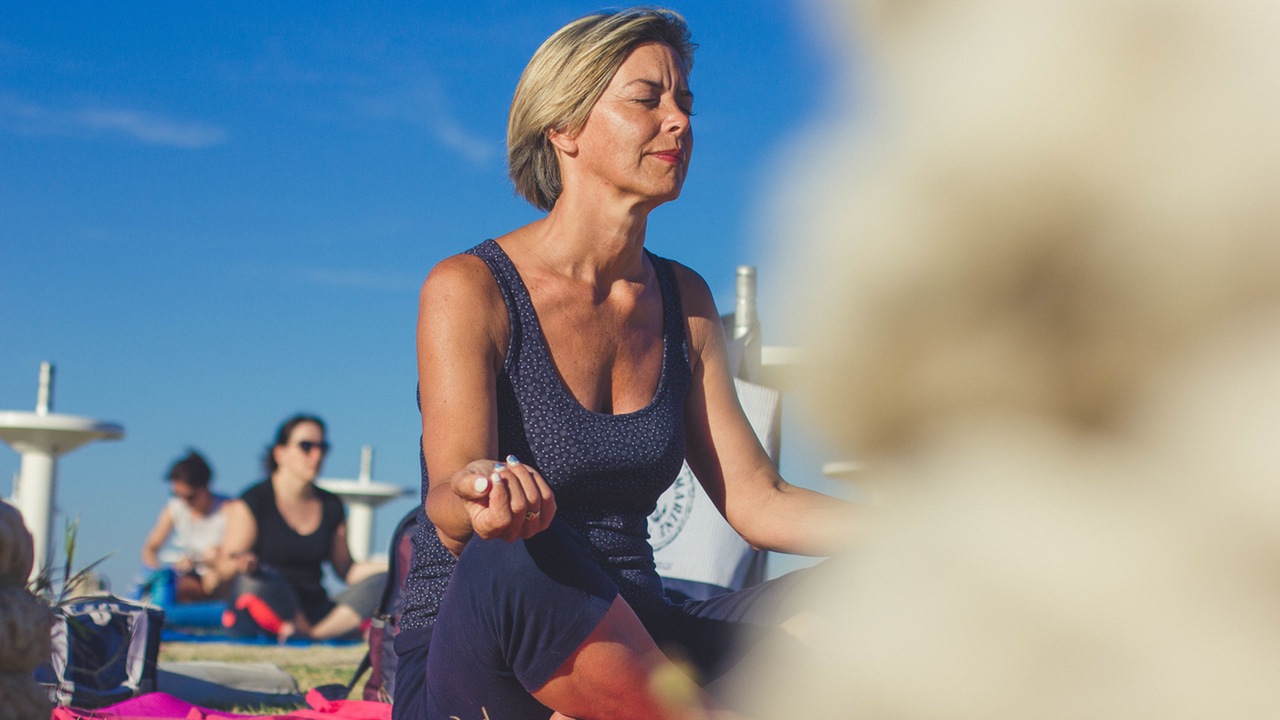So, you may not be the most flexible person and can’t touch your toe to your nose, or balance on one foot for more than a minute. Being inflexible or lacking good balance shouldn’t be reasons for you to shy away from adopting a yoga practice. In fact, practicing yoga can help: increase strength, balance and flexibility; reduce tension and stress; and aid in managing specific health conditions such as neck or back pain, arthritis, anxiety, etc.
Yoga is a mind and body practice with origins in ancient Indian philosophy. The various styles of yoga typically combine physical postures, breathing techniques, and meditation or relaxation to enhance the mind’s influence on the healing of the body.
There are several styles of yoga with Hatha yoga being the most commonly practiced in the U.S. Hatha yoga emphasizes physical postures (asanas) and breathing exercises (pranayama) along with meditation, which involves focusing your mind continuously on one thought, word (mantra), object, or mental image for a period of time with the ultimate goal of quieting your mind. Some of the major styles of Hatha yoga are Iyengar, Ashtanga, Vini, Kundalini, and Bikram yoga.
The best way to practice yoga is to sign up for a class so you can learn techniques with an instructor. Along with attending a class, adopting a regular at-home practice is necessary to progress in skill and to reap the potential health benefits. Lessons are commonly available at hospital wellness centers, health clubs, city recreation departments and private yoga studios.
Before you sign up for a yoga class, consider the following:
• Don’t use yoga to replace conventional medical care or to postpone seeing a health care provider about pain or any other medical conditions.
• If you have a medical condition, talk to your health care provider before starting yoga.
• We all have different bodies, and yoga postures should be modified based on individual abilities. Women who are pregnant and people with certain medical conditions, such as high blood pressure, glaucoma, and sciatica should modify or avoid some yoga poses.
• Think about the type of yoga you are interested in. For example, hot yoga (such as Bikram yoga) may involve standing and moving in humid environments with temperatures as high as 105°F. Because such settings may be physically stressful, people who practice hot yoga should take certain precautions. These include drinking water before, during, and after a hot yoga practice and wearing suitable clothing. People with conditions that may be affected by excessive heat, such as heart disease, lung disease, and a prior history of heatstroke may want to avoid this form of yoga. Women who are pregnant may want to check with their health care providers before starting hot yoga.
• Tell all your health care providers about any complementary health approaches you use to manage your health. This will help guarantee coordinated and safe care.
*Source: National Center for Complementary and Integrative Health, www. nccih.nih.gov
*Source: EBSCO Publishing
To find a doctor or schedule an appointment, visit Steward DoctorFinder™.




